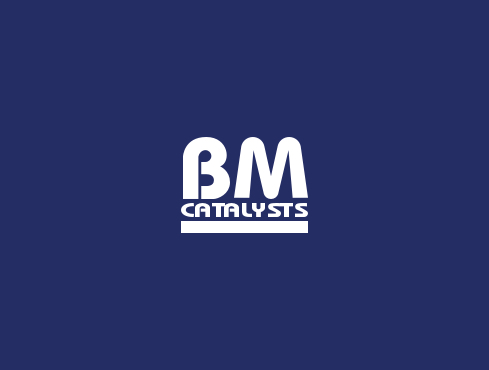2nd October 2017
Catalytic Converters: Deconstructed

A business shaped into a catalytic converter manufacturer, when demand for the product surged around 20 years ago, BM Catalysts’ manufacturing capabilities and expertise have come a long way since hand-bending their first units in the late ‘90s. Nowadays, the technical specifications, production processes and sheer knowledge the company administers when developing such products are industry-leading and keep them one step ahead of the competition. Here we deconstruct each section of the product to take a look at just what goes into producing a BM Catalysts catalyst.
A catalytic converter (cat) is an emissions control device that works to reduce the level of harmful exhaust gasses that are released, from a vehicle, into the atmosphere. In the UK, it is a legal requirement for vehicles to be fitted with a cat as part of Euro Emissions standards, aimed at improving air quality. The more recent type approval legislation (introduced in 2009) states that vehicles registered after March 2001 must be fitted with a homologated (type approved) cat, which meet more stringent emissions levels.
Located after the engine, a cat works by converting toxic gasses into less harmful ones as they pass through the unit. Catalytic converters contain a precious metal coating, which sparks a chemical reaction as the gasses pass through. The detrimental elements; hydrocarbons, carbon monoxide and nitrogen oxides, are converted into less harmful ones; water, carbon dioxide and nitrogen, therefore reducing the impact emissions cause to the environment.
A cat is assembled from a number of different components and materials. Over 90% of the components in BM Catalysts products are produced in-house, allowing full traceability and control over the manufactured products, and therefore ensuring consistency in output. There are two key elements of a catalyst that depict the vehicle in which they fit: the catalyst section – containing the monolith, matting and can – and the fitment section – containing the pipework, end cones, manifold and fittings.
Catalyst Section
BM Catalysts’ monoliths are ceramic, and are coated with a combination of precious metals that produce the chemical reaction to convert harmful gasses into less harmful ones, when the catalyst is at operating temperature (around 300⁰C). The precious metals in the coating are made up of a combination of platinum, palladium and rhodium. They come in a range of precious metal combinations, shapes, lengths and diameters; all dependent on the vehicle fitment requirement. Also included in the range at BM Catalysts are 200, 400 and 600 CPSI (cells per square inch). 409 grade stainless steel is used to create the outer can (due to its strength endurance and corrosion resistance) which contains the monolith and matting. The matting acts as a support between the inner and outer components. There are a variety of different designs including round and flat catalysts. During manufacture of a round catalyst, an I.O. swaging machine is used to perfectly size the internal diameter of the outer metal can (also known as the mantle). This process ensures the correct gap is achieved, between the inside of the can and the monolith, therefore giving the optimal holding force on the monolith. This gap is where the matting collects. The matting is designed to provide just the right density to nullify the differences between the metal can’s thermal expansion and the monolith. Using the correct matting density is essential to avoid loose and rattling cats (when too low) as well as cracks in monoliths (when too high).
The matting used in BM Catalysts products is also designed to have a lower erosion profile compared to traditional expanding mats, and is certified as a Class-Zero, True Green Support Mat System; meaning it is safe for their staff and other handlers of the product as it contains no Refractory Ceramic Fibres (RCF).
Fitment Sections
The remaining components of a cat are present mainly to ensure secure fit to the vehicle. The pipework sections are also made from 409 grade stainless steel tube. This particular material is suitable for pipe sections due to its malleability, strength and corrosion resistance. Pipes are cut, bent and sized on hi-tech CNC machinery, ensuring consistent production accuracy and O.E. standard air flow.
Flanges, lambda bosses, brackets and other fittings are the smaller components which provide the finishing touches to the cat, and furthermore assist in determining the exact fitment of each unit: Flanges, which join the cat to the next section of the exhaust, are manufactured on 7 meter long CNC plasma cutting beds. The plasma ‘cuts’ each individual flange into shape, then the component undergoes the required drilling, threading and machining on a CNC Milling Machine, dependent on the required finish specification. The lambda boss sensor ports are produced on CNC lathes which run for 24 hours a day. The lathes automatically feed solid bar through the cutting, sizing and threading process. Brackets, like flanges, are plasma cut into shape into a 2D profile, and then folded to the required form by a CNC Press brake.
A maniverter catalyst would also involve a manifold section, which allows the unit to be bolted straight onto the engine cylinders. The manifold component is made up of a number collectors/channels which transport the gasses from the engine cylinders to the catalyst. A four-cylinder engine will require a four-branch manifold.
Maniverter catalysts and close coupled catalysts are designed to allow the gas conversion to take place close to the engine; where the gasses are at their hottest, and therefore where the conversion is most efficient. Over the years, emissions standards have become increasingly stringent, which has led to the catalyst section – containing the monolith, matting and precious metals – being located closer to the engine (on maniverters and close coupled cats), than on underfloor-style cats.
As emissions standards continue to become tougher to reach, vehicle manufacturers are now starting to put additional catalytic converters onto their vehicles to ensure limits can be hit. Vehicles that used to have one catalyst on for Euro 4 level are now sometimes having two fitted for Euro 6 levels.
To watch a video of a BM Catalysts catalytic converter being manufactured, visit www.bmcatalysts.com. Further information on catalysts and tips how to look after them can also be found here, or request a BM Technical Poster by emailing marketing@bmcatalysts.com.
BackPages
Policies
Contact
Company address
Reed Mill
Sheepbridge Lane
Mansfield
Nottinghamshire
NG18 5DL









